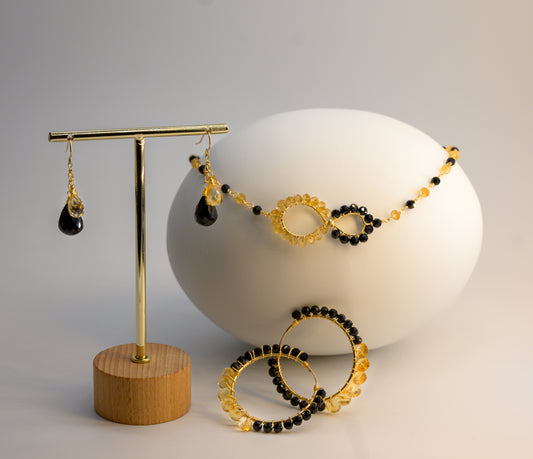History
Tourmaline, a gemstone celebrated for its incredible diversity of colors, has fascinated cultures around the world for centuries. The name "tourmaline" comes from the Sinhalese term "turmali," meaning "mixed gems," aptly describing its wide color range. This gemstone was first discovered in Sri Lanka in the 1500s but has since been found in various parts of the world, including Brazil, Africa, and the United States. Ancient legends say that a tourmaline traveled along a rainbow, gathering all its colors. Historically, it has been used for protection, healing, and as a talisman by various cultures.
Meanings and Symbolism
It is the birthstone for October, representing a wide array of personalities born within this month. Tourmaline is regarded as a stone of reconciliation, a stone that fosters compassion and cool-headedness, radiates the energy that attracts money, healing, and friendship, and is used for grounding purposes, to stabilize, and reaffirm our Earth roots. It is especially known for its multicolored varieties, with each color possessing its own specific energy and symbolism. Black tourmaline, for example, is believed to offer protection against negative energies, while pink tourmaline is associated with love and emotional healing.
Healing Properties and Uses
Tourmaline is believed to have numerous healing properties, affecting both the physical and emotional realms. It's said to help detoxify the body, improve circulation, and support the nervous system. Additionally, tourmaline's various colors are thought to have specific benefits, such as promoting self-confidence, alleviating fear, and encouraging happiness and positivity. In energy work, tourmaline is used to enhance the flow of energy, remove blockages, and balance the chakras.
Physical Properties
Tourmaline belongs to a complex family of borosilicate minerals and is distinguished by its three-sided prisms; no other common mineral has three sides. The most prized tourmaline is the Paraíba tourmaline, discovered in the 1980s in Brazil, known for its striking neon blue or green colors. Tourmaline's Mohs hardness varies between 7 and 7.5, making it durable enough for everyday wear.
Care and Maintenance
Tourmaline is relatively durable but can still be damaged by harsh impacts of extreme temperature changes. Clean your tourmaline jewelry with lukewarm water, mild soap, and a soft brush. Avoid using ultrasonic and steam cleaners, especially for stones that have been treated or have inclusions. Store your tourmaline pieces separately to prevent scratching.











